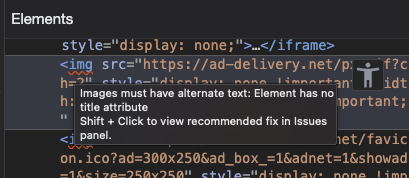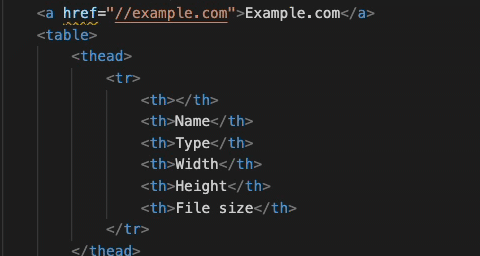
Currently we are in a huge round of tech layoffs that are reminiscent of the first .com crash in the beginning of the century. Meta, Amazon, Microsoft and now Google announced layoffs in the 10k range and it seems no one is spared. New people as well as people who have been at companies for over 20 years all got the meeting we all dread.
I also got laid off and I am currently still in negotiations about the details, so there will be a different post on that. This isn’t my first rodeo, and I am in a lead position which is why I get a lot of requests from annoyed and desperate colleagues asking for advice. So here are some things I tell myself right now and others that may be of help if you’re affected or you know someone who is.
Leaving people in the unknown is the worst
Layoffs get a lot worse when there is inconsistency and unknowns. Giving a lot of people the sack with a generous severance offer and some safety packages like CV help is bad, but there is still a resemblance of care for the person rather than the employee number. Announcing that you lay off a certain number of people and then telling your staff that the announcements will happen over the next few weeks and months is just cruel. Sure, there are some legal requirements in certain countries that don’t allow for full disclosure until a contract is signed, but any company thinking that keeping people in the unknown – at any company decision – is a good way to get more out of them or save money is deluded. I once heard the term “mushroom management” – keep your employees in the dark and from time to time cover them in shit. Don’t be that company. If you are in this situation, I am sorry, but stay strong and do your job like you would have. Most likely you have fewer colleagues to work with now, so there is a big chance that there is a lot to do. If you already know that you are laid off, tell people who rely on you for information and sign-off that you are. Leaving any unknown, even the small ones, known is a good thing.
Don’t leave in anger
Layoffs suck. There is no winner. The people involved, of course, are the biggest losers, but it is also a massive toll on managers and HR folk that have to be the messenger. These layoffs right now are not about performance, how you networked in the company or what you work on. They are a knee-jerk reaction to a perceived recession and a band-aid to make stocks go up again. When your profitability per head is low, heads must roll.
Keeping that in mind, it is important to remember that the tech market, albeit being important and very rich, is also small. So don’t let your anger out on your colleagues. Don’t shoot the messengers and don’t go out in public and vent about your company in the spur of the moment and with inappropriate language and accusations. You will cross paths with many people you worked with again. There is also a big chance that your next company will work with your old one. And being a person that still has a foot in the door instead of having slammed it in many faces is something that can be a benefit to you then.
Leave a clean desk
If possible, leave a clean desk. Delete all meetings you own on the company calendar as they may show up as indelible ghosts for months afterwards. Document what you have done, where to find information and offer to do handover meetings with colleagues who are still around. I say “if possible” because in many, especially US environments that isn’t even a thing. If you’re laid off, you’re gone. A day later. This is borderline sabotage to your own company. People accumulate knowledge, documents, access to systems and many more things you don’t want to lose immediately. Not having access to a dashboard or a compliance form that needs to be filled out every quarter is going to be a lot of work for your team – a team that already lost people who are not getting replaced any time soon.
Brush up your CV and networking profiles
In order to get a new job, you will need a good CV. Go and write one and ask people you trust to review it. Also clean up your networking profiles like LinkedIn and ask for recommendations and reviews from people you worked with. This is quite a time to get a lot of “advice” on job portals on this topic and there are a lot of “CV expert companies” offering you their services. It is important to remember though that companies are flooded with offers from people and that HR folks have only a short amount of time to look at any CV. So the things that worked for me are:
- Have a PDF/Word document CV - nobody wants to go to a web site and look at 8 minutes of parallax effects and videos.
- List all your contact details and where you legally can work as the first thing.
- List what you are looking for.
- Have different CVs, catered to what’s important for the role in question.
- Prepare for having to copy and paste all the things into some company internal hiring portal.
Take as much as you can with you
If you live in a country with good work laws, then there is a period of a few weeks where you are on administrative leave. Take this time to look at perks your company offers and use them. In my case, I am going to look at a lot of courses and certifications we offer to third parties but I have never taken. You might also have access to cheaper hardware or software licences that are a bargain to take with you. And of course contact people in the company telling them that you are off and what you liked about working with them. This doesn’t only give them a fuzzy feeling but it is also a good thing for you to remember the good bits in a time of anger and confusion.
Don’t use company resources for personal things
Your work laptop, your access to company software packages and resources are handy to have but they are not yours any more. You will also soon have no access to them any longer. So get your own devices and use these to write your CVs and contact people from personal accounts. If things get messy with your employer beyond a clean severance, any use of company resources could be a problem for you.
Don’t allow yourself to get badgered
With all due respect and apologies to the poor HR people who have to deal with this, but there is one thing that’s incredibly important. Leaving a company in a round of layoffs like these is as much a negotiation as joining a company is. So don’t sign the first offer without getting enough time to look at it and check what it means. A big bunch of money does sound good but it also can get eaten up by taxes. If you have a union representative in the company, contact them and demand them to be in every meeting. If you can afford a specialist lawyer, send the papers to them and let them do the negotiations for you. Hopefully your company knows your worth and offers you what you are due, but I’ve encountered quite a few times that the first offer that “you have to sign in two days” is much lower than you should go for.
Another thing that drives me nuts is advice you get on social media from people who “love the hustle” and see every layoff as an opportunity to “do your own thing”. You have a right to grieve and reflect now. Don’t let yourself get stressed out by amazing things that could be if you act immediately. You’ve just been punched, it is OK to recover first before picking the next argument.
Don’t take it personally – it wasn’t you
This is easy to say and of course you feel like shit when you get laid off. It is also tempting to see the fault in you and get desperate about your future. This time, it is not. If you were laid off because of your performance any time in between these huge attempts to fix capitalism it might be a different thing. But even then it may have been that you have just had the wrong job or tried to tell you that you can do it because of a good paycheck although it just wasn’t your cup of tea. It is OK to grieve though. It is OK to reflect and look at places where you can improve. But it is not necessary to beat yourself up. Talk to people, go out, do nothing and especially nothing with computers and phones. Vent in ways that are good for you and don’t inconvenience others. Angry music with headphones works for me.
Be there for others
If you worked in a place resembling some human society, you will have colleagues that reach out to you and tell you how sorry they are. Take these moments and thank them. Also reach out to people who have been laid off and just offer to be available for a chat. These are annoying, frustrating and bad times, and there is period of flooded job markets and even more layoffs coming.
I am pretty swamped, but if you feel like a quick chat, you can send me an email or reach out on LinkedIn.








